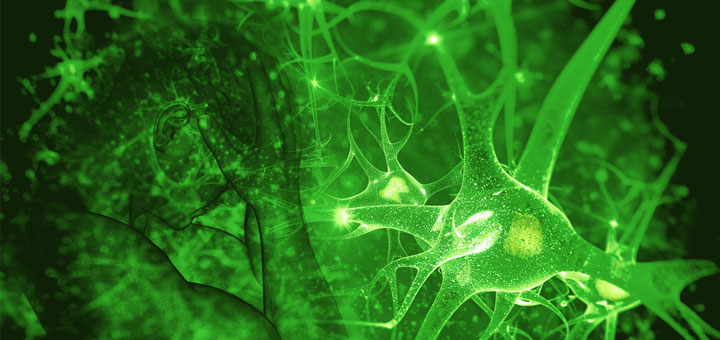In 1964 Raphael Macheoulam, an Israeli professor of Medicinal Chemistry and Natural Products at the Hebrew University of Jerusalem in Israel, isolated the key component THC (tetrahydrocannabinol) from an extract of a Cannabis Sativa plant. THC is the compound in Cannabis (Marijuana) that causes the euphoria and other medicinal effects. He also isolated cannabidiol, cannabigerol and other classes of compounds all slightly different, yet closely related to the mother compound THC. Many of these related compounds do not cause euphoria (don’t get you high) but have other physiologic (medicinal) effects.
Since THC produced by a plant had such a great physiologic effect, this led to a search of a naturally occurring compound, produced by the body, which would cause a similar effect. This compound which was produced by the body (endogenous) was a natural pain reliever and was soon isolated and called Anandamide (arachidonoyl ethanolamide). Several other endogenous cannabinoids have since been identified. (Additional endocannabinoids include virodhamine (O-arachidonoyl ethanolamine), noladin ether, 2-AG (2-arachidonoyl glyceryl ether) and NADA (N-arachidonoyl dopamine). It is only important that you understand there is a control of virtually all body functions by a regulatory system called the endocannabinoid system. This is a completely new science field.
Reason would assume that if the body made a chemical to relieve pain and cause other physiologic effect, then there must be a Cell Membrane Receptor in human tissue that responds to stimulation by this chemical. There are different types of receptors in the body each with a unique job to do. (Estrogen, Testosterone, Insulin, Opiate and many other types of receptors) These receptors are much like a lock and key mechanism. So, opiate receptors only bind with opiates, cannabinoid receptors only bind to cannabinoids. This is true regardless of where they are produced.
So the search was on for a Cannabinoid Receptor in human tissue that would reversibly bind and unbind to Phyto-Cannabinoids (plant derived) or Endo-cannabinoids (naturally made by your own body, also referred to as Endogenous). Indeed cannabinoid receptors were isolated and cloned in humans and surprisingly also found in all tetrapod vertebrates (amphibians, reptiles, birds and mammals.) Two types of Cannabinoid receptors were isolated. These were named CB1 and CB2. There is now evidence that 2 or even 3 distinctively different types of Cannabinoid receptors may exist and have unknown physiologic control of the body. CB1 receptors are found in nerve tissue and lung, liver, intestine and kidney. CB2 receptors are found in Lymphatic tissue, spleen and liver and are responsible for Immunologic and hematopoietic functions. (Blood component formation)
Cannabinoid receptor-related processes are many and involve; cognition, memory, anxiety, motor behavior, sensory, autonomic and neuroendocrine responses, Glucose metabolism and insulin resistance, immune responses and inflammatory effects, Hematopoietic (blood component formation), control of emesis (vomiting), and nausea, increase hunger, promote feeding and control of appetite.
It is of interest that lack of cannabinoid receptors in the colon is directly associated with increased incidence of colon cancer. Further research of how the endocannabinoid system has effect on cancer is in its infancy, but there is no question that Cannabinoids do have inhibitory effect on cancers.
So you can see that Anandamide which stimulates cannabinoid receptors, directly effects many major physiologic functions in the body, and that THC is a plant equivalent of this naturally occurring or endogenous chemical.
Now comes the interesting part which is not widely acknowledged. Pharmaceutical companies, being what they are, came to the “brilliant” conclusion that if Cannabis made you hungry, then stimulation of cannabinoid receptors must have something to do with hunger/satiety (satiety = fullness) so their devious minds followed with the “simple” thought that if they could develop a compound that would block cannabinoid receptors, then they could block hunger, and thus make a super diet pill.
The pills worked in a novel way, by blocking cannabinoid receptors and thus blocking pleasure centers in the brain that provide the feel-good response from smoking or eating. Previously the drug companies developed an opiate receptor blocker called Narcan. When a patient came into the emergency room with an opiate overdose, Narcan could be given intravenously to the patient and all effects of the opiate would be blocked. So all respiratory depression effects of the opiates would be blocked as well as the “high”. From this experience of receptor blocking , physicians now could bring people down off of their “high”. The thought process was that if “High” was a bad thing, then blocking the pleasure centers might be a good thing. So the companies pitched the new cannabinoid receptor blocker drug for possible use in obesity and drug addiction. Now it seems the receptor blocker drugs may block pleasure too well, and cause a variety of unintended effects. (raising the risk of depression, suicide and other very negative effects.) http://www.salzarex.com/rimonabant.html
The research developed a drug they called Acomplia, also known by its trade name (Rimonabant.) This was a compound that blocked cannabinoid receptors and was marketed in Europe as a diet drug. Whenever a drug blocks a receptor, it blocks the function of that receptor and is called an antagonist. Rimonabant, a Cannabinoid receptor blocker, interferes with CB1 receptors and had the opposite effect of THC. So THC makes you happy, hungry and sleepy, then this new drug would do the exact opposite. There were reports of Suicide, major Depression, Agitation/Aggressiveness, Anxiety, Insomnia, and Seizures with the use of this drug. Rimonabant, was removed from the market in Europe and the FDA denied its use in the U.S.
The FDA correctly recognized that blocking cannabinoid receptors (CB1) was harmful to patients, so one might conclude that stimulating those receptors might have a beneficial result?
Cannabinoid receptors cause major physiologic response and control nearly every function of the body. Blocking these receptors now seems to be a block-head idea and points to the importance of the endocannabinoid system. This is a new science, a control system of the body that God made.
[su_animate]By legal Democratic Vote; Cannabis Is Medicine.[/su_animate]
David B. Allen M.D.





